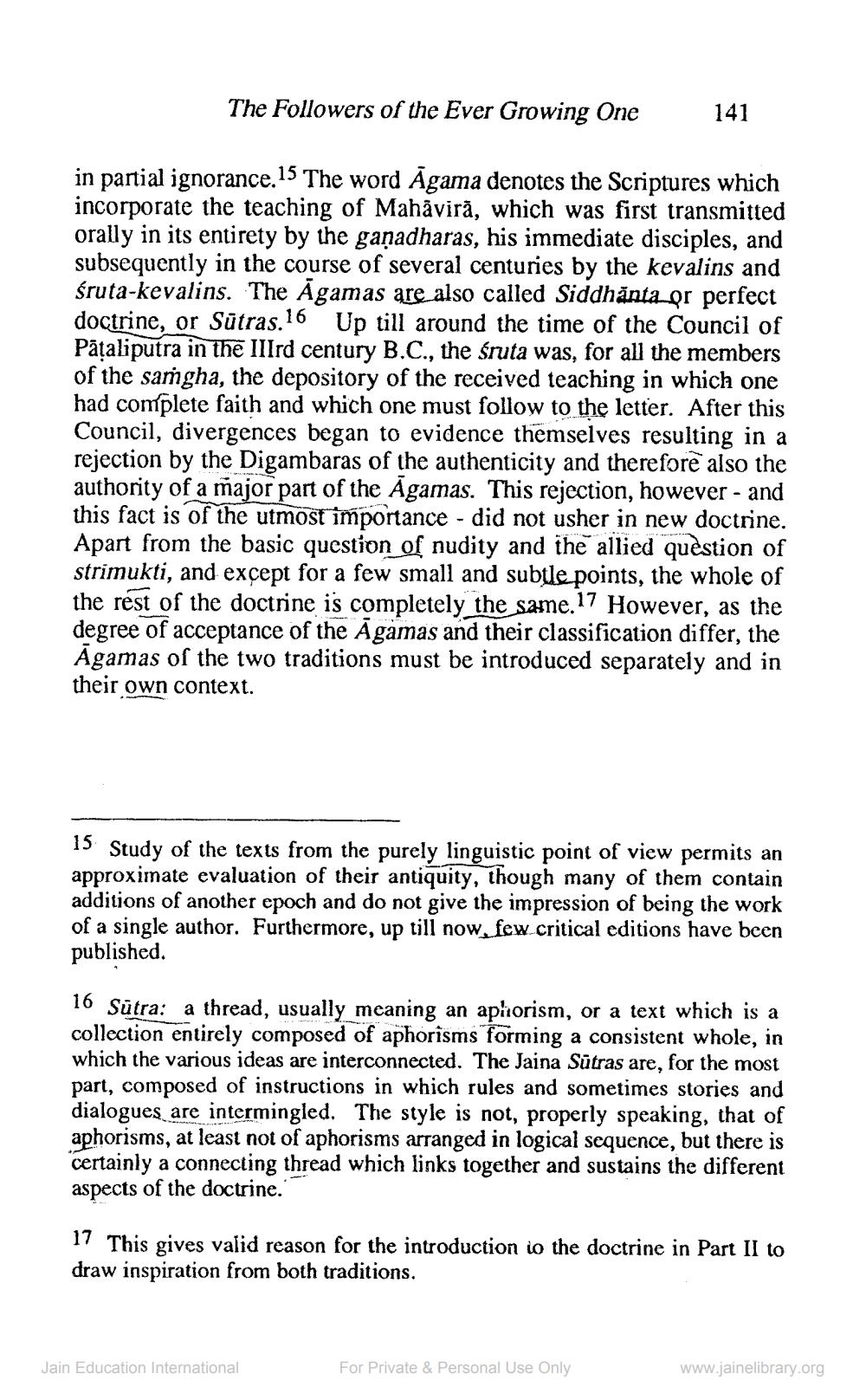________________
The Followers of the Ever Growing One
in partial ignorance.15 The word Agama denotes the Scriptures which incorporate the teaching of Mahavira, which was first transmitted orally in its entirety by the gaṇadharas, his immediate disciples, and subsequently in the course of several centuries by the kevalins and śruta-kevalins. The Agamas are also called Siddhanta or perfect doctrine, or Sūtras.16 Up till around the time of the Council of Pataliputra in the IIIrd century B.C., the śruta was, for all the members of the samgha, the depository of the received teaching in which one had complete faith and which one must follow to the letter. After this Council, divergences began to evidence themselves resulting in a rejection by the Digambaras of the authenticity and therefore also the authority of a major part of the Agamas. This rejection, however - and this fact is of the utmost importance - did not usher in new doctrine. Apart from the basic question of nudity and the allied question of strimukti, and except for a few small and subtle points, the whole of the rest of the doctrine is completely_the_same. 17 However, as the degree of acceptance of the Agamas and their classification differ, the Agamas of the two traditions must be introduced separately and in
their own context.
15 Study of the texts from the purely linguistic point of view permits an approximate evaluation of their antiquity, though many of them contain additions of another epoch and do not give the impression of being the work of a single author. Furthermore, up till now, few critical editions have been published.
141
16 Sutra: a thread, usually meaning an aphorism, or a text which is a collection entirely composed of aphorisms forming a consistent whole, in which the various ideas are interconnected. The Jaina Sutras are, for the most part, composed of instructions in which rules and sometimes stories and dialogues are intermingled. The style is not, properly speaking, that of aphorisms, at least not of aphorisms arranged in logical sequence, but there is certainly a connecting thread which links together and sustains the different aspects of the doctrine.
17 This gives valid reason for the introduction to the doctrine in Part II to draw inspiration from both traditions.
Jain Education International
For Private & Personal Use Only
www.jainelibrary.org




